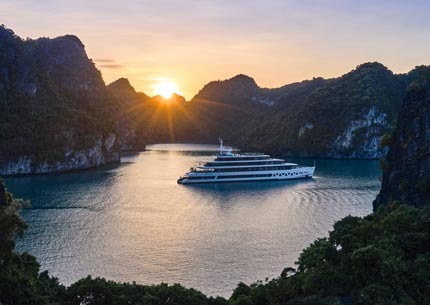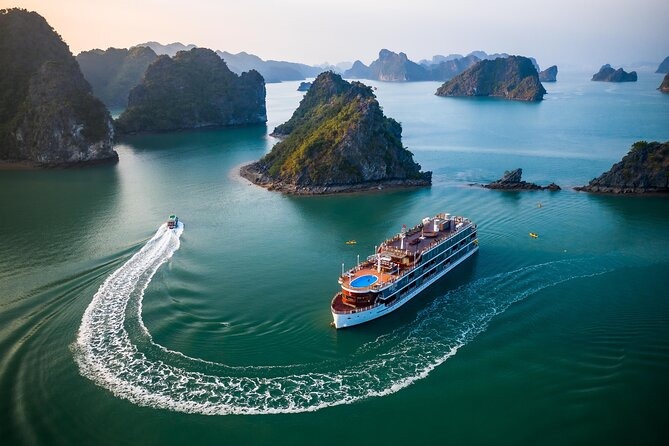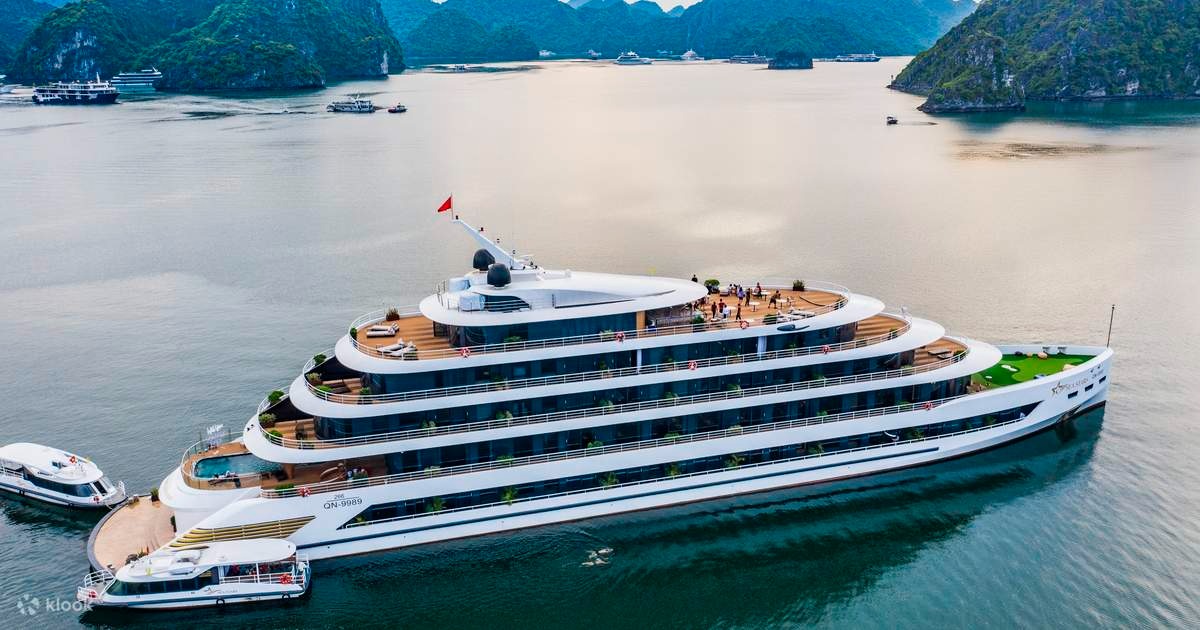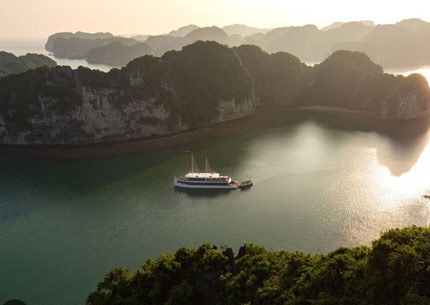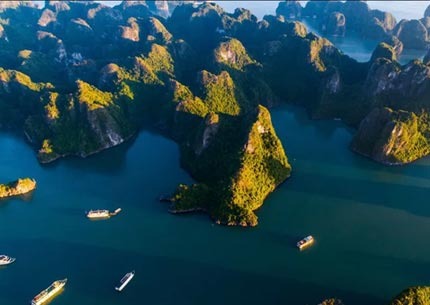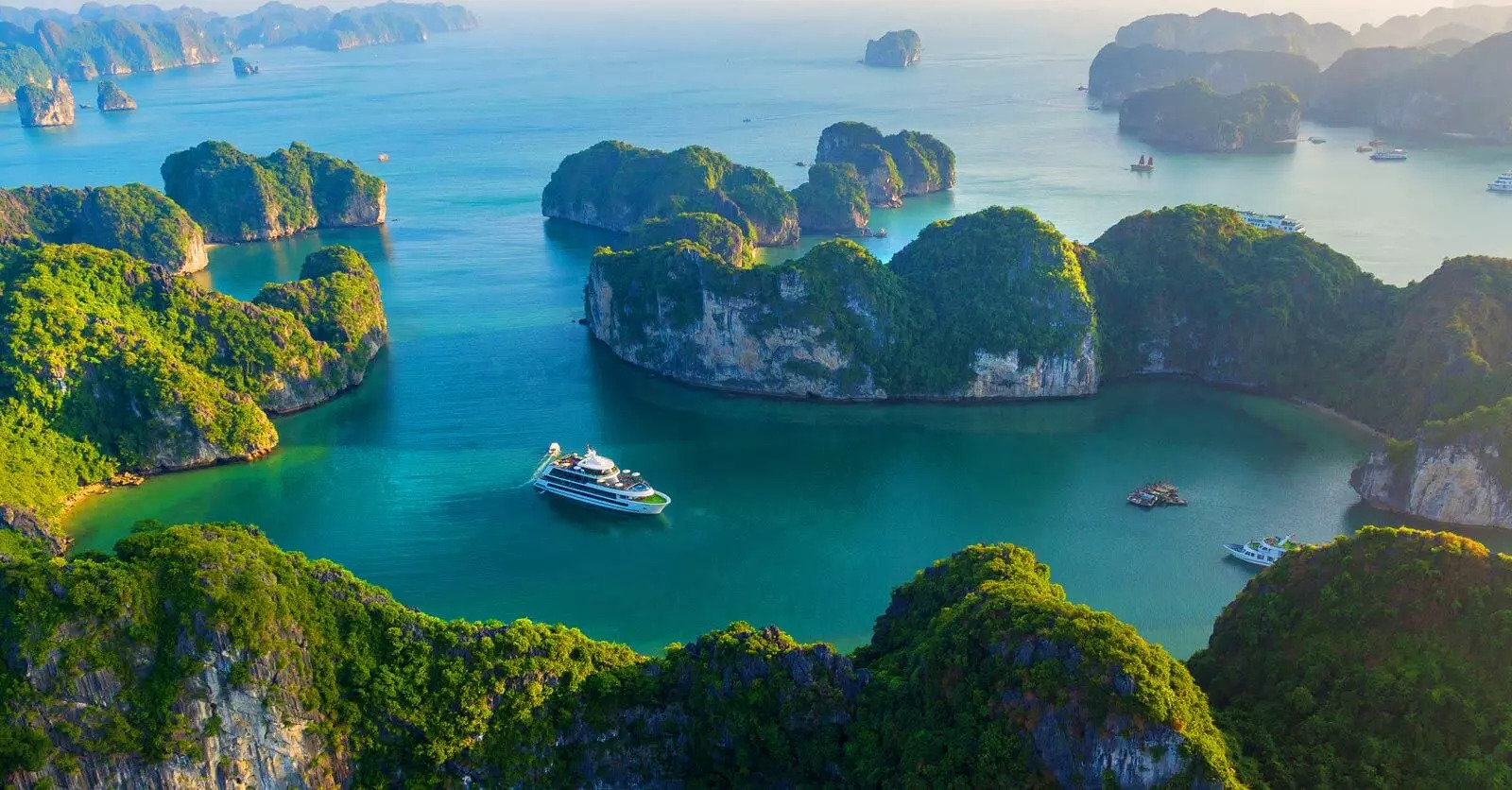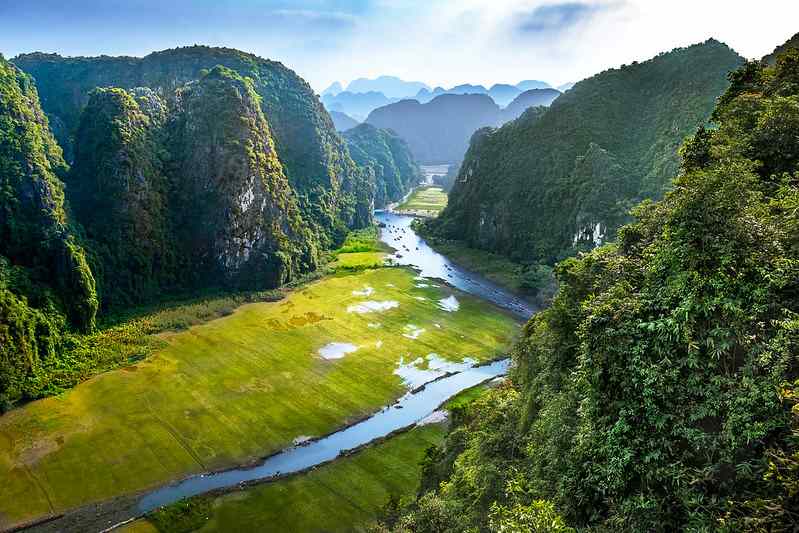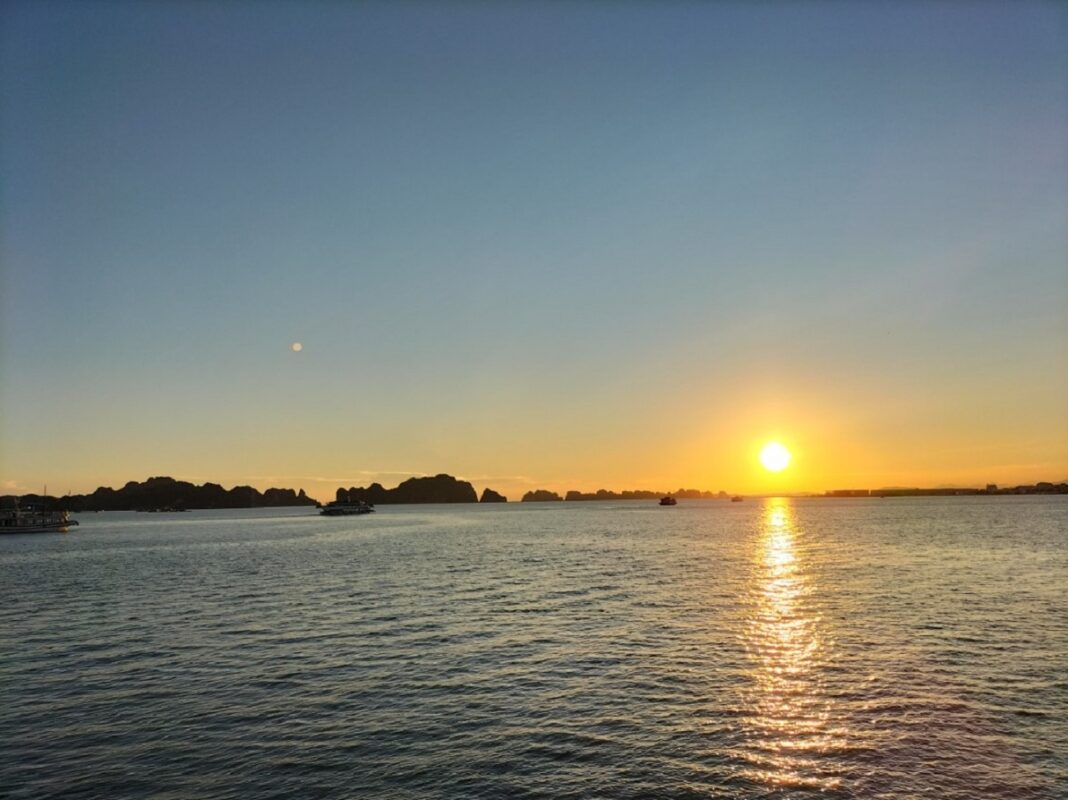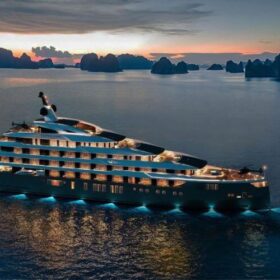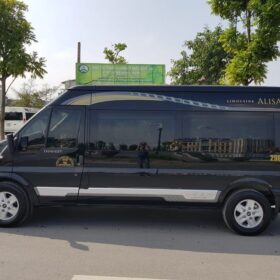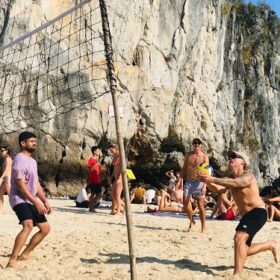Halong Bay Weather in January 2026-2027: 15 Essential Tips for Perfect Winter Cruising
Planning a visit to the mystical Halong Bay in January 2026-2027? Discover the ideal temperatures, sailing conditions, and expert packing tips to maximize your winter cruise experience in Vietnam’s most iconic seascape.
What Makes January Weather in Halong Bay Special for 2026-2027?
January in Halong Bay presents a fascinating paradox for travelers. While technically winter, this period offers a uniquely enchanting experience that many visitors overlook. Based on climate modeling and historical patterns, January 2026-2027 is expected to maintain the region’s typical winter characteristics but with some notable shifts due to changing climate patterns.
The emerald waters of Halong Bay take on a different personality during this season – one draped in ethereal morning mists and bathed in softer sunlight. The average temperature will hover between 15-20°C (59-68°F) during daytime, dropping to approximately 12-17°C (54-63°F) at night. This represents a slight warming trend compared to historical January averages, making outdoor activities more comfortable than in previous decades.
What truly distinguishes January from other months is the dramatically reduced rainfall – typically only 20-35mm spread across just 4-5 days of the month. This dry climate ensures that your luxury cruise experience won’t be hampered by persistent downpours that characterize summer months.
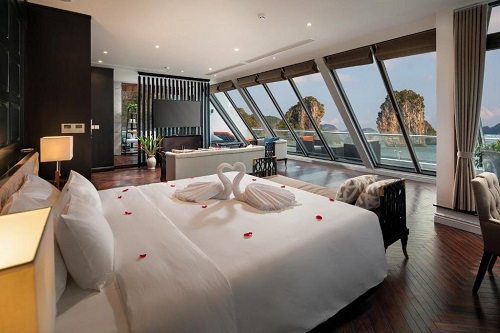
15 Weather Patterns to Expect in Halong Bay for January 2026-2027
1. Morning Mist Phenomena
The cool January mornings in Halong Bay create magnificent mist formations that transform the seascape into something truly magical. Between 6-9 AM, expect visibility of approximately 500-800 meters as tendrils of fog weave between limestone karsts. This creates what locals call the “dragon’s breath” effect – a photographer’s dream scenario that turns ordinary landscapes into otherworldly visions.
By mid-morning (around 10 AM), the mist typically dissipates, revealing the bay in crystal-clear conditions. This predictable pattern allows cruise directors to schedule activities optimally, with early morning tai chi sessions often coinciding with the mystical foggy ambiance.
2. Afternoon Temperature Stability
Unlike summer months when temperatures fluctuate dramatically, January afternoons in Halong Bay maintain remarkable stability. Between 11 AM and 4 PM, temperatures consistently stay within a 3-4°C range, typically between 18-22°C (64-72°F). This predictability makes January ideal for extended outdoor excursions.
The stable temperatures also affect the bay’s water conditions. Surface water temperatures average 19-21°C (66-70°F) – cool but not prohibitively cold for brief swimming excursions for the more adventurous travelers.
3. Wind Patterns and Sea Conditions
January brings predominantly northeasterly winds averaging 10-15 km/h (6-9 mph), occasionally gusting to 20 km/h (12 mph) in open sections of the bay. These moderate winds create gentle wave action of approximately 0.3-0.5 meters within the sheltered sections of Halong Bay.
For those concerned about seasickness, January ranks among the top 3 months for stable sailing conditions. The limestone formations that make Halong Bay famous also serve as natural windbreaks, creating remarkably calm waters in the interior sections where most cruising routes operate.
4. Evening Cooling Trend
After sunset (approximately 5:30 PM in January), temperatures begin dropping steadily at a rate of about 1°C per hour until reaching the overnight low around 2 AM. This predictable cooling makes evening activities on cruise decks particularly pleasant when properly dressed.
Most luxury vessels adapt to this pattern by scheduling indoor activities after dinner, though some offer special evening excursions with provided warming refreshments like Vietnamese hot tea or mulled wine to enhance the experience.
5. Humidity Levels and Comfort
January humidity in Halong Bay averages 75-85% – high by some standards but significantly lower than summer months when it can exceed 95%. This combination of moderate temperature and manageable humidity creates what meteorologists call a “comfort index” that rates January as the second most physically comfortable month to visit Halong Bay.
The reduced humidity also means less condensation on camera equipment – a significant advantage for photography enthusiasts capturing the bay’s iconic landscapes.
6. Rainfall Frequency and Intensity
When rain does occur in January, it typically manifests as light drizzle rather than the heavy downpours characteristic of summer monsoons. Precipitation events average just 1-2 hours in duration, with rainfall intensity rarely exceeding 3-5mm per hour.
This pattern means that even on the occasional rainy day, outdoor activities can often continue with minimal adjustment – particularly kayaking excursions where light rain adds to the atmospheric experience rather than detracting from it.
7. Sunlight Hours and Quality
January provides approximately 5-7 hours of direct sunlight daily, with the sun typically breaking through by 9-10 AM and setting around 5:30 PM. The winter sun angle creates distinctive lighting conditions that photographers prize for its golden quality – particularly during the “golden hours” of 7-9 AM and 3:30-5:30 PM.
UV index readings average 6-8 during midday hours – moderate but still sufficient to require sun protection for extended outdoor activities.
8. Nighttime Sky Clarity
With reduced humidity and precipitation, January offers exceptional nighttime viewing conditions. On clear nights (which constitute approximately 15-18 days of the month), visibility extends to approximately 5,000-8,000 stars – nearly triple what’s visible during summer months.
Many luxury cruises now offer specialized nighttime astronomy sessions on their upper decks, taking advantage of these optimal viewing conditions away from urban light pollution.
9. Microclimate Variations
Halong Bay’s complex topography creates distinctive microclimates that become more pronounced in January. Temperature differences of 2-3°C can exist between open water areas and sheltered coves, with the latter typically maintaining slightly warmer conditions due to reduced wind exposure.
Savvy cruise operators leverage these microclimate variations by scheduling activities in optimal locations – morning kayaking in warmer protected coves, for instance, followed by midday excursions when temperature differences minimize.
10. Air Quality Considerations
January’s prevailing winds and reduced industrial activity during Vietnam’s Tet holiday preparations contribute to significantly improved air quality. Particulate matter readings average 15-25 μg/m³ – classified as “good” on international air quality indexes and approximately 40% lower than summer readings.
This enhanced air clarity contributes to superior visibility for photography and general sightseeing, with distant karsts visible at distances exceeding 10-15 kilometers on clear days.
11. Extreme Weather Probability
While January generally features stable conditions, long-range climate modeling for 2026-2027 indicates a slight increase in cold surge probability during the second half of the month. These rare events (occurring on average once every 5-7 years) can temporarily drop temperatures by 5-8°C for periods of 2-3 days.
Cruise operators monitor these weather patterns closely and maintain flexible itineraries that can adapt to these infrequent events without significantly impacting the overall experience.
12. Water Transparency Variations
January’s reduced rainfall dramatically improves water clarity throughout Halong Bay. Visibility beneath the surface averages 3-5 meters – nearly double the summer average – making it ideal for underwater photography and observing marine life during kayaking excursions.
This enhanced clarity results from reduced sediment runoff from mainland watersheds and lower algae bloom activity in the cooler winter waters.
13. Sunrise and Sunset Characteristics
January’s atmospheric conditions create spectacular sunrise and sunset displays, with extended color transitions lasting 30-45 minutes (compared to summer’s briefer 15-20 minute transitions). The morning sunrise typically begins around 6:15-6:30 AM, while sunset commences approximately 5:15-5:30 PM.
These extended twilight periods create what photographers call “blue hour” – a magical time when the sky takes on deep indigo hues that contrast dramatically with the silhouetted karst formations.
14. Tidal Variations and Cave Access
January features moderate tidal variations averaging 1.2-1.8 meters between high and low tide. This range particularly affects access to certain cave formations like Sung Sot Cave, where entrance accessibility is tide-dependent.
Most 3-day cruise itineraries coordinate their schedules with these tidal patterns to ensure optimal timing for cave explorations, with high tide typically occurring between 8-10 AM and 8-10 PM during January 2026-2027.
15. Storm Frequency and Severity
January falls well outside Vietnam’s typhoon season, with the statistical probability of significant storm activity being less than 0.5%. The last January typhoon affecting Halong Bay occurred in 1996, making this one of the safest months regarding extreme weather events.
When minor weather systems do develop, they typically provide 36-48 hours of advance notice, allowing cruise operators ample time to adjust itineraries while maintaining safety protocols.
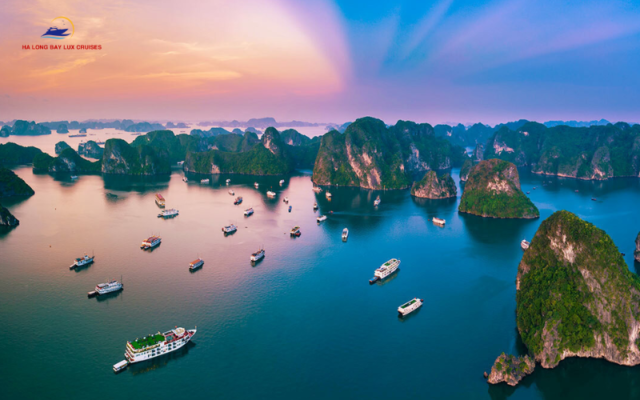
Packing Essentials for Halong Bay January Weather 2026-2027
Preparing appropriately for Halong Bay’s January climate requires strategic packing that balances warmth, comfort, and adaptability. Unlike summer visits that focus primarily on heat protection, winter cruising demands more versatile clothing options.
Layering is your ultimate strategy. Pack lightweight thermal base layers that can be worn under regular clothing during cooler mornings and evenings. These should be supplemented with mid-layers like light sweaters or fleeces that can be easily removed during warmer afternoons.
Your outer layer should include a windproof jacket – ideally one that’s water-resistant rather than fully waterproof, as breathability matters in the moderately humid conditions. The goal is protection from occasional light drizzle and wind chill during speedboat transfers and open-deck activities.
Footwear considerations should prioritize grip and quick-drying materials. Many cave explorations and island visits involve potentially slippery surfaces, so rubber-soled shoes with good traction are essential. Pack a secondary pair in case your primary shoes get wet during excursions.
For sun protection, the winter intensity might seem milder, but the reflection off water surfaces actually increases UV exposure. Pack broad-spectrum sunscreen (minimum SPF 30), polarized sunglasses to reduce glare, and a wide-brimmed hat that offers both sun and light rain protection.
Photographers should include anti-fog cloths and silica gel packets to manage the morning humidity that can affect camera equipment. Waterproof camera bags or covers are advisable for kayaking excursions.
Evening attire should include at least one warmer outfit for special dinners on open decks, where temperatures can drop to 14-16°C (57-61°F) after sunset. A light scarf or pashmina serves dual purposes – warmth in the evening and sun protection during daytime excursions.
Best Activities for January Weather in Halong Bay
January’s distinctive weather patterns create ideal conditions for certain activities while making others less appealing. Understanding these optimal matches enhances your cruise experience significantly.
Kayaking excursions reach their prime in January’s calm waters. With average wave heights under 0.5 meters and wind speeds typically below 15 km/h, even novice paddlers can navigate comfortably between karst formations. The cool temperatures also mean you’ll avoid the discomfort of excessive perspiration common during summer kayaking.
Morning tai chi sessions on cruise decks take on special significance when performed amidst January’s mystical fog patterns. Many luxury vessels position these sessions to coincide with sunrise (approximately 6:30 AM) when the interplay of emerging light and dispersing mist creates a meditative ambiance impossible to replicate in other seasons.
Cave explorations benefit from January’s moderate temperatures, especially in larger formations like Sung Sot Cave where summer humidity can create uncomfortable conditions. The cave interiors maintain stable temperatures around 18-20°C (64-68°F) year-round, making them perfectly aligned with January’s outdoor conditions and eliminating the temperature shock experienced when entering from summer heat.
Photography enthusiasts find January offers the year’s best lighting conditions. The lower sun angle creates dramatic shadows and highlights across the karst landscapes, while the clearer atmosphere enhances color saturation. The occasional morning mist provides opportunities for atmospheric shots impossible during other seasons.
While swimming isn’t ideal for most visitors given the water temperature (19-21°C/66-70°F), many luxury cruises offer heated jacuzzis on their upper decks – creating the magical experience of soaking in warm water while surrounded by the cool winter seascape.
Squid fishing, a traditional evening activity on many cruises, reaches its peak effectiveness in January when the cooler water temperatures bring squid closer to the surface. Success rates for this activity are approximately 60-70% higher than during summer months.
Cultural Considerations for January 2026-2027 Visits
January 2026-2027 presents unique cultural dimensions that influence the Halong Bay experience. Most significantly, Vietnamese Lunar New Year (Tet) will fall in early February 2027, meaning late January will see increasing preparations throughout the region.
This pre-Tet period offers cultural insights unavailable other times of year. Cruise staff often decorate vessels with traditional red and gold ornaments, while galley teams prepare special foods associated with the coming celebrations. Some cruises offer demonstrations of bánh chưng (traditional rice cake) wrapping – a quintessential Tet preparation activity.
Local fishing communities visible during cruising routes will display distinctive pre-Tet activities, including the painting and repair of vessels and homes. Fishing intensity actually increases during this period as families prepare for the holiday when fishing traditionally pauses for several days.
For photographers, these preparations add human elements to landscape compositions, with red Tet decorations creating striking contrasts against the winter hues of the bay.
Market visits included in some extended itineraries become particularly fascinating in late January, as vendors stock special Tet items including hoa đào (peach blossoms) and hoa mai (yellow apricot flowers) – traditional New Year decorations that symbolize renewal and prosperity.
Cruise Selection Tips for January 2026-2027
Not all Halong Bay cruises are equally well-adapted to January’s distinctive conditions. When booking for this season, prioritize vessels with these specific features:
- Enclosed panoramic lounges – These allow uninterrupted views during occasional drizzle or cooler periods without sacrificing comfort. The most sophisticated vessels feature floor-to-ceiling glass with minimal framing to maximize visibility.
- Heated cabin systems – While daytime temperatures remain comfortable, evenings can feel chilly. Advanced climate control systems that provide both heating and cooling capabilities ensure comfort regardless of conditions.
- Covered outdoor observation areas – The ideal January cruise offers sheltered outdoor spaces that protect from occasional light rain while still providing direct connection to the sea breeze and sounds.
- Flexible itineraries – Operators with alternate route options can adapt to localized weather conditions, ensuring optimal experiences regardless of specific January patterns in 2026-2027.
- Extended routes including Bai Tu Long or Lan Ha Bay – These less-visited regions offer superior January experiences with reduced boat traffic and more pristine conditions. Their additional distance from major ports also means clearer water and enhanced visibility.
The 3-day luxury cruise options provide particular value in January, as they allow sufficient time to reach the most remote areas where winter conditions create truly spectacular landscapes untouched by development.
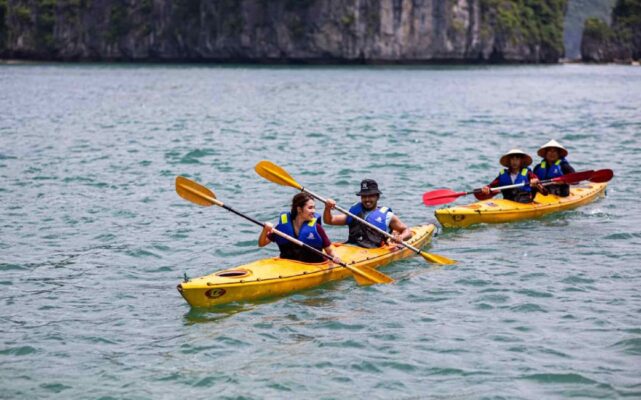
Pro Tip: Book heated cabins if traveling with kids or seniors. And pack layers—you’ll need both warm and light clothing.
Transportation Considerations for January 2026-2027
Recent infrastructure developments have transformed access to Halong Bay for winter visitors. The Van Don International Airport, fully operational since 2018 and expanded in 2023, now offers direct connections to major Asian hubs including Seoul, Bangkok, and Singapore.
For January travelers, this airport presents significant advantages over Hanoi access routes, reducing transfer time to the cruise terminal to approximately 50 minutes versus the 2.5-3.5 hours from Hanoi (depending on traffic conditions).
The Hai Phong Expressway, completed in 2020 and widened in 2024, provides an alternative route that proves particularly valuable during January’s occasional foggy mornings when visibility on older roads could cause delays. This modern highway maintains consistent travel times even in reduced visibility conditions.
Most premium cruise operators now offer private shuttle services from both Van Don Airport and Hanoi, with climate-controlled vehicles specifically designed for winter comfort. These typically include complimentary refreshments and WiFi, allowing productive use of transfer time.
For those combining Halong Bay with broader Vietnam explorations, January’s mild temperatures make this an ideal month for the popular Hanoi-Halong-Sapa northern circuit, with all three destinations enjoying their optimal weather conditions simultaneously.
Photography Tips for January’s Unique Conditions
January’s distinctive lighting and atmospheric conditions in Halong Bay create extraordinary photography opportunities that require specific techniques to fully capture:
For morning mist photography, use slightly longer exposures (1/15 to 1/60 second) to capture the ethereal quality of fog movements. Position yourself to shoot toward the rising sun for dramatic backlighting effects that transform ordinary karst silhouettes into extraordinary compositions.
Water reflection shots reach their peak quality in January due to the combination of calm conditions and clear skies. Early mornings (7-9 AM) typically offer mirror-like water surfaces ideal for symmetrical compositions. Use polarizing filters to control reflection intensity based on your creative vision.
Color saturation appears naturally enhanced during January due to the clearer atmosphere and lower humidity. While summer photography often requires vibrance adjustments in post-processing, January images typically need minimal enhancement to maintain authentic representation.
For twilight photography, January’s extended transition periods (30-45 minutes) allow sufficient time to experiment with different exposures and compositions. Begin with faster exposures as colors first appear, gradually extending to 1-2 seconds as light diminishes to capture the rich blues and purples that characterize Halong Bay’s winter evenings.
The limestone karsts cast longer shadows during January due to the lower sun angle, creating dramatic diagonal lines across water surfaces between 8-10 AM and 3-5 PM. These natural leading lines can dramatically enhance composition when properly incorporated.
Is January 2026-2027 the Right Time for Your Halong Bay Visit?
January represents an optimal time for certain traveler profiles while potentially challenging others. Understanding where you fit helps determine if this winter period aligns with your expectations.
January is ideal for:
- Photographers seeking optimal lighting and atmospheric conditions
- Couples desiring romantic, mist-shrouded landscapes with fewer crowds
- Cultural enthusiasts interested in pre-Tet preparations and traditions
- Value-conscious travelers leveraging lower winter pricing for luxury experiences
- Comfort-prioritizing visitors who prefer mild temperatures over summer heat
- Wildlife observers as certain bird species become more visible in winter months
January may challenge:
- Beach enthusiasts primarily seeking swimming and sunbathing opportunities
- Budget travelers restricted to outdoor activities due to limited funds for luxury cruises
- Heat-seeking vacationers escaping northern winter for tropical conditions
For most visitors, January’s distinctive ambiance and optimal comfort levels outweigh the minor limitations imposed by cooler temperatures. The reduced crowds, enhanced visibility, and special winter atmosphere create memories distinctly different from the standard tropical experience many associate with Vietnam.
Conclusion: Embracing Halong Bay’s Winter Magic
January 2026-2027 in Halong Bay offers a unique convergence of favorable conditions that savvy travelers increasingly recognize. The combination of stable weather, reduced crowds, and special atmospheric effects creates an experience entirely different from summer visits – neither better nor worse, but distinctively magical in its own right.
The emerald waters take on deeper hues in winter light, while the limestone karsts emerge dramatically from morning mists like ancient sentinels standing watch over the bay. These visual spectacles, combined with the comfortable cruising conditions and cultural richness of the pre-Tet period, create an experience that increasingly draws discerning travelers specifically during this season.
As you plan your Halong Bay adventure for January 2026-2027, remember that this UNESCO World Heritage site reveals different aspects of its beauty in each season. Winter unveils its most mysterious and contemplative face – one that perfectly complements the reflective mood often accompanying the start of a new year.
With proper preparation, appropriate cruise selection, and realistic expectations, your January journey through these mystical waters will likely become not just a trip, but a profound experience that remains vivid long after your return home.
Frequently Asked Questions About Halong Bay in January 2026-2027
Will cruise activities be canceled due to January weather?
Activity cancellations due to weather are rare in January, with historical data showing that less than 5% of scheduled excursions face weather-related adjustments. The most weather-sensitive activities (overnight beach camping and certain remote kayaking routes) might see occasional modifications, but core experiences remain consistently available.
Is January too cold for an enjoyable cruise experience?
Not at all. Daytime temperatures averaging 15-20°C (59-68°F) provide comfortable conditions for most activities when properly dressed. Evening temperatures require light jackets but remain mild compared to winter in Europe or North America. The enclosed lounges and climate-controlled cabins on luxury vessels ensure comfort regardless of outside conditions.
How does January pricing compare to peak season?
January offers exceptional value, with cruise rates typically 15-25% lower than peak summer prices despite offering superior comfort conditions. The exception is the period immediately surrounding Tet (late January/early February 2027), when domestic tourism can drive prices slightly higher.
Can I still see the famous Halong Bay sunset in January?
Absolutely. January actually offers some of the year’s most spectacular sunsets due to the winter atmospheric conditions. The clearer air allows for more vibrant colors, while the occasional high cirrus clouds create dramatic refraction effects. Sunset typically occurs between 5:15-5:30 PM in January.
Is seasickness more common during January cruises?
Contrary to what some might expect, seasickness reports are actually lower in January compared to summer months. The reduced wave action (averaging 0.3-0.5 meters) and more stable barometric pressure create smoother sailing conditions. The main cruising areas remain well-protected by the thousands of islands that buffer wind effects.
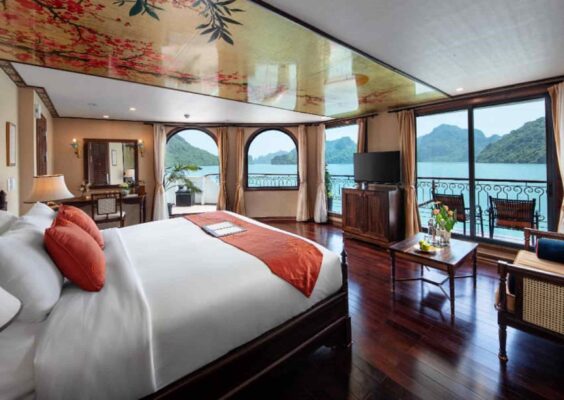
Final Thoughts
Ha Long Bay in January offers a truly magical setting—cool, quiet, and steeped in cultural charm. The weather is ideal for cruises, the landscape feels like a living watercolor, and Tet spirit adds a festive sparkle.
If you’re seeking a peaceful escape with a touch of the mystical, Ha Long Bay in winter is your dream destination.
Hotline | WhatsApp: +84.978.358.422
Phone | WhatsApp: +84.962.261.687
Email: halongbayluxcruises@gmail.com
vietnammarveltravel@gmail.com

